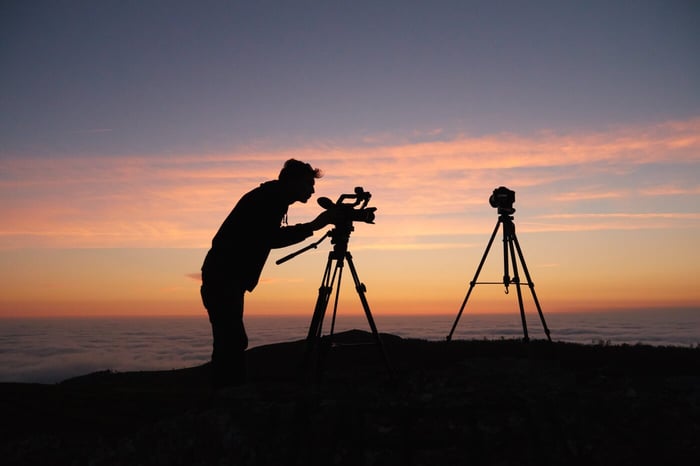It can be challenging to know how to elevate your photography, but with the right approach, you can produce your best work.
As a photographer, one of the best ways to maximize creativity and take better photos is to constantly challenge yourself and push the boundaries of your comfort zone. This can be done in a number of ways, such as experimenting with new techniques, trying out different compositions and perspectives, and exploring new subjects and locations.

One technique that can help to expand your skill set and push you out of your comfort zone is to use different lenses and focal lengths. For example, using a wide-angle lens can help to capture a sense of scale and depth, while a telephoto lens can be used to compress the background and create a sense of intimacy. Similarly, experimenting with different shutter speeds and aperture settings can help to create a sense of motion and depth in your photos.
Then, there’s trying out different lighting techniques. For example, shooting in natural light can help to create a sense of warmth and depth in your photography, while using artificial light can help to create a sense of drama and tension. Playing with shadows and reflections can also help to add depth and interest to your photos.
 It's also important to pay attention to the composition of your photos. This can include things like the rule of thirds, leading lines, and other compositional techniques that can help to guide the viewer's eye through the image.
It's also important to pay attention to the composition of your photos. This can include things like the rule of thirds, leading lines, and other compositional techniques that can help to guide the viewer's eye through the image.
The rule of thirds is a photography composition tip that focuses around dividing your image into three horizontal sections and three vertical sections. Your subject is placed in the left or right third of an image, leaving the other two thirds open. This allows for more balance in the photo and dynamism or movement. The viewer sees a key element off to the side, then takes a visual journey throughout the rest of the image.
Leading lines is another compositional technique where human-made or natural lines lead the viewer's eyes through a photograph to the heart of the image. Learning how to use leading lines effectively can help you to create more powerful work. You'll need to determine and evaluate your location and time of day and take note of any natural lines in the area. After that, you'll determine what your focal point is and position yourself accordingly. Be sure to always take multiple shots to give yourself options and vary your angles in order to cover your bases. 
Even with these tools, we all know even the best photographers make mistakes and sometimes the unexpected happens. That's why it's important to back up your work regularly. Hard drives, memory cards, and other storage devices can fail without warning and we’ve all accidentally deleted a photo or a folder of photos. Backing up your work ensures that you have a copy of your photos that you can restore if needed. Check out our reliable collection of drives featuring high-speed data transfer rates that are available in a variety of capacities. Glyph drives are compatible with a wide range of devices, including Mac and Windows computers, as well as USB-C and Thunderbolt-enabled devices, which makes it easier for photographers to transfer their photos to the drive.
As a photographer, your images are your livelihood. It's essential to have a backup plan in case of a disaster, such as a hard drive failure or a stolen camera. One solution is to use a Glyph drive to backup your content. Our drives are known for their reliability, durability and their high-speed data transfer capabilities, which makes them an ideal solution for photographers who need to backup large amounts of data quickly and easily. We would recommend the Atom EV Portable Drive for editing larger files, as the NVME capabilities allow for blazing fast read/write speeds. In contrast, the Glyph Blackbox PRO RAID desktop drive is perfect for meeting all of your archival needs and is available with up to 40TB of storage.
 Ultimately, one of the most important things you can do to take your photography to the next level is to continue to educate yourself and develop your unique, personal style. Remember that becoming a better photographer is a journey, be patient and enjoy the process, and don't be afraid to make mistakes, as they are an important part of the learning process.
Ultimately, one of the most important things you can do to take your photography to the next level is to continue to educate yourself and develop your unique, personal style. Remember that becoming a better photographer is a journey, be patient and enjoy the process, and don't be afraid to make mistakes, as they are an important part of the learning process.





